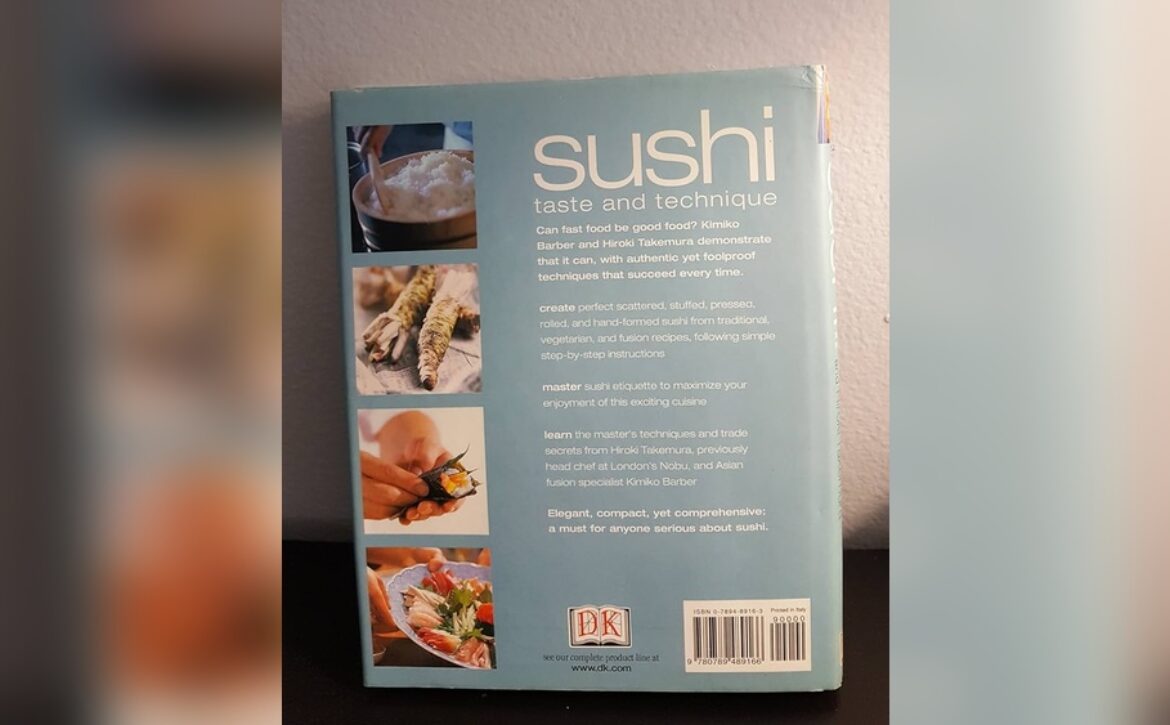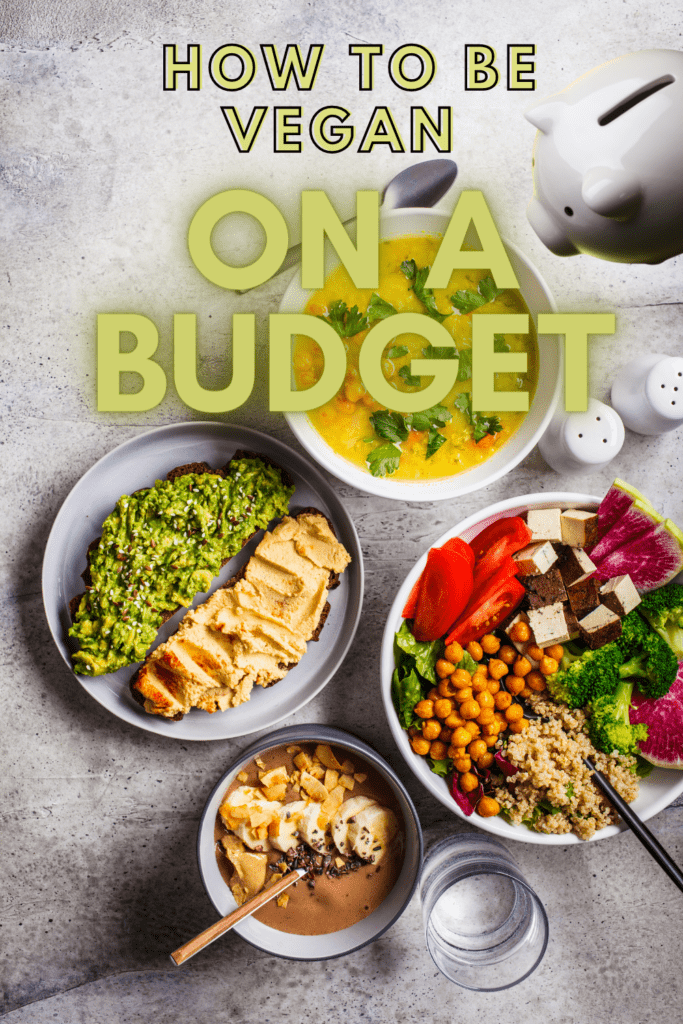
How to Become a Vegetarian Cookery Expert: Easy Steps
Are you intrigued by the vibrant world of vegetarian cooking but unsure where to start? You’re not alone.
Many find the idea of becoming a vegetarian cook both exciting and daunting. Imagine creating mouth-watering meals that are not only healthy but also bursting with flavor and creativity. Whether you’re looking to adopt a healthier lifestyle or simply expand your culinary skills, diving into vegetarian cookery can open up a world of possibilities.
In this guide, you’ll discover simple steps and insider tips that can transform you from a novice to a confident vegetarian chef. Ready to unlock the secrets of delightful, plant-based dishes? Let’s get cooking!

Understanding Vegetarian Cuisine
Exploring vegetarian cuisine opens up a world of colorful and nutritious dishes. Learning to cook vegetarian meals involves understanding different vegetables, grains, and plant-based proteins. Experimenting with herbs and spices adds flavor and depth to these delicious creations.
Understanding vegetarian cuisine can open a world of flavors and healthy eating options. Whether you’re considering a lifestyle change or just want to expand your culinary skills, diving into vegetarian cooking is a rewarding journey. It not only enriches your meals but also broadens your understanding of diverse foods.
Basics Of Vegetarian Ingredients
Starting with the basics is key. Familiarize yourself with staples like lentils, beans, tofu, and a variety of grains. These ingredients are versatile, nutritious, and form the backbone of many vegetarian dishes. Explore different vegetables and fruits. Each offers unique textures and flavors, making your dishes vibrant and exciting. You might be surprised how a simple ingredient swap can transform a meal. Spices and herbs are your best friends. They add depth and complexity to vegetarian dishes. Experiment with combinations to find what excites your taste buds the most.
Popular Vegetarian Dishes
Get inspired by popular vegetarian dishes. Think about trying a hearty vegetable curry or a refreshing quinoa salad. These dishes are not only delicious but also simple to prepare. Consider making a classic ratatouille or a creamy mushroom risotto. These are crowd-pleasers that showcase the richness of vegetarian cuisine. Plus, they make excellent additions to any dinner table. Don’t forget about international flavors. Dishes like falafel, vegetable stir-fry, or bean tacos offer a taste of global cuisine. They’re perfect for when you want to impress your friends with your culinary skills. What vegetarian dish are you excited to try? Remember, the journey of becoming a vegetarian cook is about exploration and enjoyment. Every new dish you make is a step towards mastering the art of vegetarian cuisine.
Essential Cooking Techniques
Embarking on the journey of vegetarian cookery can be an exciting adventure. To truly excel, mastering essential cooking techniques is crucial. These skills not only enhance the flavors of your dishes but also ensure you can prepare meals efficiently and safely. Let’s dive into the core techniques that will elevate your vegetarian cooking game.
Mastering Knife Skills
Having sharp knife skills is a game-changer in the kitchen. Precision in chopping and slicing vegetables not only speeds up cooking but also affects the texture and presentation of your dishes.
Start with understanding the importance of a sharp knife. A dull blade requires more force, increasing the risk of slips and cuts. Regularly honing your knife keeps it in prime condition.
Practice different cuts like julienne, dice, and chiffonade. Each has its unique use in recipes—from salads needing thin slices to soups requiring uniform chunks. Familiarize yourself with the techniques; they’ll soon become second nature.
Remember, safety first. Always keep fingers tucked under when chopping to avoid accidents. Consider taking a basic knife skills class—it’s a small investment with big returns.
Cooking Methods For Vegetables
Cooking vegetables is an art. Each method brings out different flavors and textures. Understanding these can make your dishes stand out.
Roasting vegetables caramelizes their natural sugars. This method works well for root vegetables like carrots and sweet potatoes, adding depth and sweetness.
Steaming preserves nutrients and colors. It’s perfect for broccoli and spinach, keeping them vibrant and healthy. A steamer basket is a valuable tool in your kitchen.
Stir-frying is ideal for quick meals. High heat and constant stirring mean vegetables retain their crunch. Bell peppers, snap peas, and mushrooms work excellently in stir-fries.
Ask yourself: What flavors do you want to bring out in your dish? Try experimenting with different methods and see how they transform the taste profile of your meals.
As you refine these techniques, your confidence in the kitchen will grow. You’ll find yourself creating dishes that not only nourish but also delight the senses.
Experimenting With Flavors
Embarking on the journey to become a vegetarian cook involves more than just swapping out meat for veggies. It’s about crafting meals that are vibrant and full of flavor. One of the most exciting aspects of vegetarian cooking is experimenting with flavors. This is where your creativity truly shines. You get to play with spices, herbs, and unique combinations to create dishes that not only satisfy but also surprise. How can you transform a simple carrot into a gourmet delight? Let’s dive into the fascinating world of flavor experimentation.
Spices And Herbs
Spices and herbs are the cornerstone of vegetarian cooking. They have the power to elevate a dish from bland to extraordinary. Think of spices as your artist’s palette. Each one brings its own unique color and taste to your dishes.
Consider adding cumin for a warm, earthy taste or turmeric for a vibrant color and slight bitterness. Basil and oregano can add a sweet, peppery kick to your dishes. The possibilities are endless.
Don’t be afraid to try new combinations. Mixing cinnamon with paprika might sound unusual, but it can add a surprising depth to a dish. Have you ever thought of adding a pinch of nutmeg to your spinach? Try it, and you might be surprised.
Creating Flavor Profiles
Creating flavor profiles is like building a story for your taste buds. Each ingredient plays a role, and together, they create a delicious narrative. Start by understanding the basic flavors: sweet, salty, sour, bitter, and umami.
Layering flavors is key. Begin with a base, like garlic or onions, and build up with spices and herbs. Add a touch of acidity with lemon juice or vinegar to brighten the dish. A sprinkle of salt can enhance the overall taste.
Consider what you want your dish to say. Do you want it to be warm and comforting, or fresh and zesty? Experiment with different combinations to see which profiles resonate with your vision. Have you ever tried creating a spicy yet sweet tomato sauce? It might become your signature dish.
By focusing on experimenting with flavors, you can transform simple ingredients into culinary masterpieces. What surprising combinations will you discover in your vegetarian kitchen?
Building A Recipe Collection
Creating a vegetarian recipe collection involves exploring diverse ingredients and flavors. Discover new vegetables and grains to enhance your dishes. Experimenting with plant-based proteins like tofu and lentils can add variety and nutrition to meals.
Building a recipe collection is a delightful journey for any aspiring vegetarian cook. It’s not just about gathering a list of dishes; it’s about curating a mix of flavors that excite your palate and expand your culinary horizons. As you dive into this adventure, you’ll find yourself experimenting with classic dishes and creating innovative meals that reflect your unique taste.
Classic Vegetarian Recipes
Start with the classics. They provide a solid foundation for your culinary skills. Think of dishes like hearty lentil soup, spicy chickpea curry, or creamy mushroom risotto. These are staples in many vegetarian kitchens and offer rich, satisfying flavors. Embrace the simplicity and reliability of these recipes. They are tried and tested, often passed down through generations. You’ll find comfort in their familiarity and ease of preparation. Consider adding your own twist. Maybe swap ingredients or add a spice you love. This personalization keeps the classics fresh and exciting for both you and those you cook for.
Innovative Dish Creations
Challenge your creativity. Try combining ingredients in unexpected ways. Have you thought about a beetroot and avocado salad with a tangy citrus dressing? It’s vibrant, nutritious, and refreshingly different. Explore global cuisines for inspiration. Many cultures have unique vegetarian dishes that you might not have tried. Experimenting with these can introduce you to new flavors and techniques. Don’t be afraid to make mistakes. Cooking is an art, and sometimes the best dishes come from trial and error. Your kitchen is your playground; let your imagination run wild and see where it takes you. As you build your collection, ask yourself: What makes a dish memorable for you? Is it the taste, the texture, or the experience of sharing it with others? Your answers will guide your culinary journey and make your recipe collection truly your own.
Developing Presentation Skills
Developing presentation skills can transform your vegetarian dishes from simple meals to culinary masterpieces. A beautifully presented plate not only pleases the eye but also enhances the dining experience. Your presentation skills can captivate your guests, making your vegetarian dishes memorable and enticing.
Plating Techniques
Plating is an art, and mastering it can elevate your cooking. Start with the rule of thirds, arranging elements to create a balanced look. Use different shapes and textures to add interest.
Consider the color palette of your ingredients. Vibrant vegetables like red peppers and green asparagus can add a pop of color. Experiment with different plate sizes and colors to see which complements your dish best.
Play with height by stacking elements or using a ring mold. This adds dimension and makes the dish more visually appealing. Remember, less is often more—avoid overcrowding the plate.
Garnishing Ideas
Garnishes are more than decoration; they should enhance the flavor. Fresh herbs like basil or cilantro can add a fragrant touch. A sprinkle of toasted nuts can provide a delightful crunch.
Consider edible flowers for a unique flair. They not only look stunning but can add subtle flavors. Remember to use garnishes that are in harmony with the dish’s taste.
Sauces can be used creatively as garnishes. Drizzle a vibrant beet puree or a tangy balsamic glaze on the plate. This not only adds flavor but also creates an artistic touch.
Have you ever noticed how a small change can make a big impact? Next time you prepare a dish, try a new plating technique or garnish. You might surprise yourself with the results.

Continuous Learning
Continuous learning is the secret sauce to becoming a proficient vegetarian cook. As trends evolve and new ingredients become available, staying updated is crucial. Whether you’re just starting or you’ve been cooking for years, embracing continuous learning can elevate your skills and creativity.
Attending Workshops
Workshops are a fantastic way to dive deeper into vegetarian cooking. They offer hands-on experience and direct interaction with experts. You can learn new techniques, discover exciting ingredients, and connect with fellow enthusiasts.
Think about the energy in a room full of like-minded individuals, all eager to learn. It’s contagious! Maybe you’ve attended a workshop where you mastered the art of making the perfect tofu scramble. That excitement often translates into creativity back in your own kitchen.
Check local community centers or culinary schools for workshops. Don’t hesitate to travel a bit; sometimes the best experiences are just a town away. Have you considered online workshops? They’re convenient and often feature renowned chefs from around the world.
Reading Culinary Books
Diving into culinary books opens up a world of knowledge. They offer detailed insights into techniques, ingredients, and the philosophy behind vegetarian cooking. It’s like having a mentor at your fingertips.
Books provide a structured way to learn, unlike the chaotic nature of online browsing. They guide you through recipes, offering tips and tricks along the way. Have you ever tried a recipe from a book, only to find it becomes a staple in your kitchen?
Explore books by chefs who specialize in vegetarian cuisine. Libraries and bookstores are treasure troves waiting to be uncovered. What new flavors or techniques will you discover in your next read?
Continuous learning in vegetarian cookery isn’t just about acquiring knowledge; it’s about sparking joy in your culinary journey. How will you enrich your skills today?
Sharing Your Expertise
Discovering the art of vegetarian cookery can be rewarding and delicious. Start by experimenting with fresh vegetables and herbs. Share your creations with others to inspire healthy eating habits.
Sharing your expertise as a vegetarian cook can be fulfilling. It’s a chance to inspire others to embrace plant-based cooking. Engaging with people who want to learn vegetarian recipes is rewarding. You can share tips, techniques, and your passion. Here are two effective ways to share your knowledge.
Hosting Cooking Classes
Offer cooking classes to teach vegetarian recipes. Invite friends, family, or community members. Share your favorite dishes and cooking methods. Use simple ingredients that are easy to find. Explain each step clearly. Encourage participants to ask questions. Hands-on learning helps them understand better. Provide printed recipes for them to take home. This creates a lasting impression. You can host classes at home or rent a space. Ensure the environment is welcoming and comfortable. Make it a fun experience for everyone.
Writing A Food Blog
Start a food blog to share your vegetarian journey. Write about your recipes, tips, and cooking experiences. Use simple language for easy understanding. Share stories and personal anecdotes. This makes your blog relatable. Include photos of dishes to entice readers. Regularly update your blog with new content. Engage with your audience through comments. Respond to questions and feedback promptly. Promote your blog on social media for wider reach. Build an online community around your passion for vegetarian cooking.

Frequently Asked Questions
What Are The First Steps To Becoming A Vegetarian Cook?
Start by learning vegetarian basics and familiarizing yourself with plant-based ingredients. Experiment with simple recipes to build confidence. Consider taking a vegetarian cooking class or online course. Practice regularly to improve your skills. Understanding nutritional needs and how to balance meals is also crucial for a successful vegetarian cooking journey.
How Can I Find Vegetarian Cooking Classes?
Search online for local cooking schools offering vegetarian courses. Many online platforms also provide vegetarian cooking classes. Check community centers for workshops. Consider joining vegetarian forums or social media groups for recommendations. Online reviews and testimonials can guide you to the best options.
What Essential Tools Do Vegetarian Cooks Need?
Invest in quality knives, cutting boards, and a blender. A food processor and a set of pots and pans are essential. Consider getting a steamer and a rice cooker. These tools help in efficiently preparing a wide range of vegetarian dishes.
How Can I Enhance Flavor In Vegetarian Dishes?
Use a variety of herbs and spices to add depth to your meals. Experiment with different cooking techniques like roasting and grilling. Incorporate umami-rich ingredients like mushrooms and soy sauce. Try using acids such as lemon juice or vinegar to brighten flavors.
Taste as you cook to adjust seasoning.
Conclusion
Becoming a vegetarian cook is a rewarding journey. Start small and be patient. Experiment with new ingredients and recipes. Enjoy exploring flavors and textures. Practice makes perfect. Share your creations with friends and family. Their feedback helps you grow. Embrace the vibrant world of vegetarian cooking.
It offers endless possibilities for delicious meals. Remember, every dish is a step forward. Keep learning and stay curious. Your skills will improve over time. Most importantly, have fun in the kitchen. Cooking should be a joyful experience. So, put on your apron and start today!





